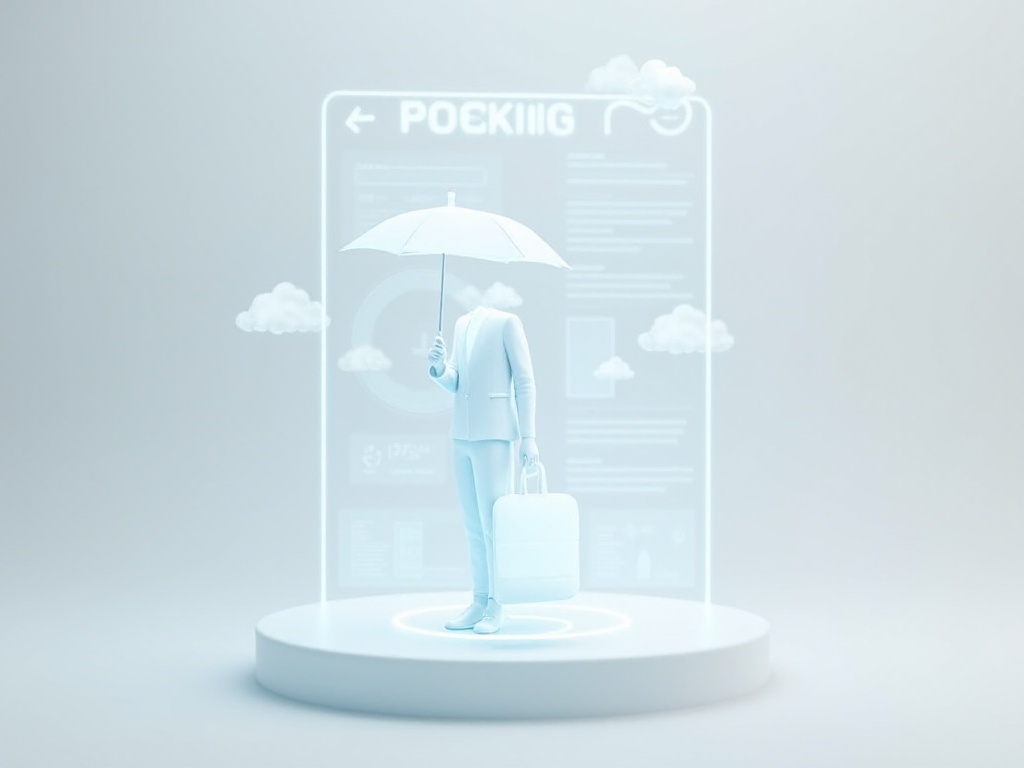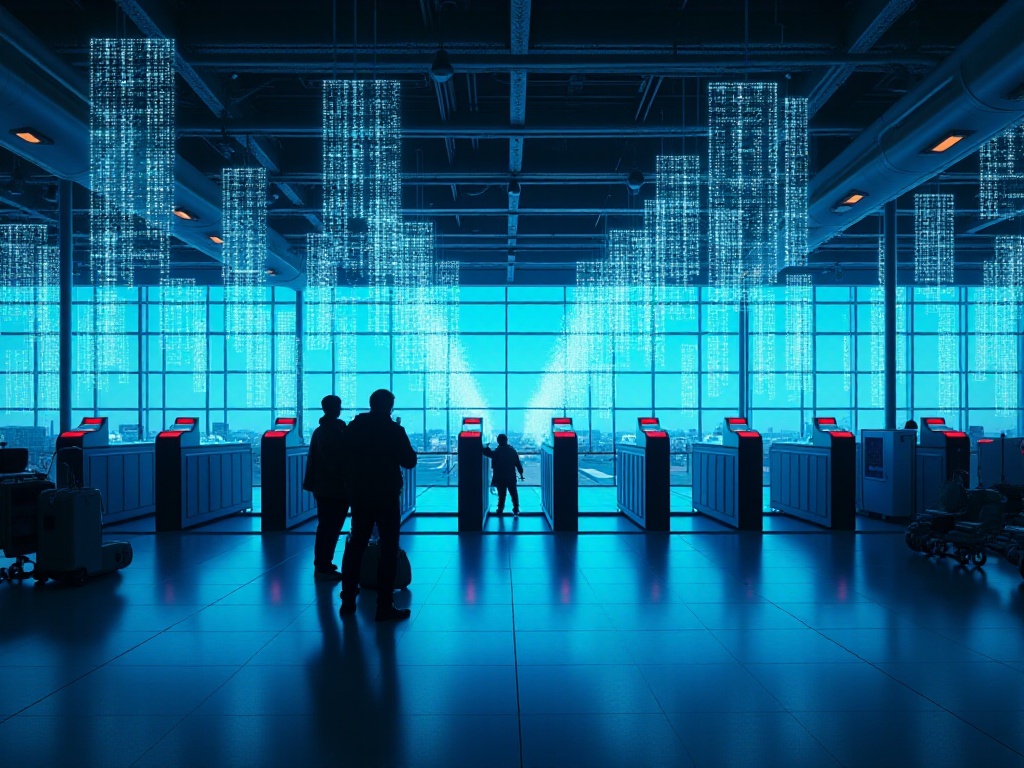Opening Thoughts
Every time I see others' travel vlogs, I can't help but feel envious. Watching them explore the world, visit popular attractions, and experience local cuisine is simply amazing. As an experienced traveler who has visited over 20 countries, I deeply understand that a perfect travel experience requires extensive preparation. Today, I'll share my secretly treasured travel tools that I've collected over the years, guaranteeing you'll say goodbye to awkward situations and mistakes, and easily achieve travel freedom.
Pre-Trip Preparation
I still remember my first embarrassing international travel experience. When I went to Japan, due to lack of experience, my suitcase was packed to the brim. Once I arrived, I discovered that the clothes I brought were either too heavy to use or completely mismatched in style. Worse still, I forgot to bring a power adapter, leaving my phone dead on the first night and unable to use any apps - it was a nightmare.
Later, I discovered PackPoint, which solved all my packing troubles. This app is like a thoughtful travel butler. You just input your destination, travel dates, and trip type, and it creates a detailed packing list based on local weather and itinerary specifics.
For example, last month when I was traveling to Vancouver for business, I entered "5-day business trip to Vancouver in March." PackPoint immediately generated a complete list: formal suits, shirts, casual wear, and workout gear - everything was included. It even remembered small items like umbrellas and thermal cups that are easy to forget. It also reminds you to bring essential medicines, chargers, and data cables. Most thoughtfully, it provides reminders about rain gear or sun protection based on local weather forecasts.
Speaking of itinerary planning, I now can't live without TripIt. I remember how I used to search through various booking confirmation emails on my phone, copy and paste them into notes, and then manually organize them into an itinerary - it was incredibly time-consuming. Now, I just forward flight, hotel, and car rental confirmation emails to TripIt, and it automatically recognizes the information and generates a super clear itinerary.
Last year, when I toured Europe with friends across 7 countries, we had over a dozen flight and hotel bookings. If I had organized it manually like before, it would have taken several hours. With TripIt, I organized all the itineraries in just 10 minutes. Plus, it supports offline viewing, so you can check your itinerary anytime without internet. Even better, it monitors flight status in real-time and notifies you of any delays or gate changes.

Accommodation and Transportation
When it comes to accommodation, there are so many choices now. Besides traditional hotels, vacation rentals have become the first choice for many young people. I personally use Airbnb, Booking.com, and Vrbo the most.
Airbnb's biggest feature is that it lets you experience local life. Last year, I stayed in an artist's penthouse in Paris, with walls covered in the host's own artwork and a balcony facing the Eiffel Tower. Having coffee on the balcony while watching the sunrise was absolutely incredible. Plus, the host recommended local favorite restaurants and attractions - experiences you can't get staying at a hotel.
Booking.com is great for hotel reservations. Its biggest advantage is the substantial discounts and special offers. It also has powerful filtering features where you can sort by location, price, amenities, and other conditions, plus detailed user reviews. I particularly love its "Daily Deals" feature, which sometimes offers super low prices for five-star hotels.
Vrbo is the perfect choice for family trips. Its properties are generally larger with better facilities. Last winter, I booked a beachfront villa in Hawaii through Vrbo for my family. It had four bedrooms, a private pool, and a BBQ area, yet cost less than booking a hotel of the same caliber. Most importantly, the whole family could stay together, cook and chat in the evening, creating a particularly cozy atmosphere.
For transportation, if you're driving, I strongly recommend Turo. It's like Airbnb for cars, where private car owners rent out their vehicles. There's a huge selection of cars, from economy sedans to luxury sports cars, and prices are much lower than traditional car rental companies.
Last year in Hawaii, I rented a Porsche 718 convertible through Turo. Driving along the coastline with the sea breeze and sunshine was truly a peak life experience. The car owners keep their vehicles very clean and thoughtfully provide accessories like chargers and parking cards.

Real-Time Navigation
In an unfamiliar city, a reliable navigation app is absolutely essential. Although there are many navigation apps available, I most recommend Google Maps. Its real-time traffic feature is particularly powerful, capable of intelligently planning optimal routes based on current traffic conditions.
I remember once when I was attending a business meeting in Tokyo, my planned route suddenly experienced severe congestion. Google Maps immediately suggested an alternative route, and although it was slightly longer, I still arrived at the venue on time. It not only shows traffic conditions but also tells you about nearby restaurants, attractions, gas stations, and other information - it's like a walking encyclopedia.
Even better, Google Maps supports offline map downloads. In places where data fees are high abroad, this feature is a lifesaver. You can download maps of your destination in advance and navigate normally even without network access. It also displays real-time public transit information, telling you subway and bus arrival times, which is especially useful for travelers who like to experience local public transportation.

Language Communication
Language barriers have always been the biggest concern for many international travelers. Although there are various translation software options, knowing some basic local language is still important to truly integrate into local life. This is where the language learning app Drops comes in handy.
Drops' biggest feature is that it gamifies language learning. It helps you naturally remember words and phrases through combinations of images, sounds, and animations. Its travel-themed courses, in particular, systematically organize the most commonly used travel phrases.
For example, before going to Mexico, I spent a week learning Spanish with Drops. Although I couldn't speak fluently, I could say basic greetings, thanks, and ask for directions. I remember once in a small restaurant in Mexico City, chatting with the owner in broken Spanish. Although my pronunciation wasn't perfect, the owner was so touched that they treated me to a special tequila. The feeling of being able to communicate in the local language is truly amazing.
Moreover, Drops' learning method is particularly suitable for fragmented time learning. You can practice a couple of word sets while waiting for the subway, review before bed, and unconsciously master basic phrases in a language. It also sends review reminders based on your learning progress to help you maintain continuous learning.

Immigration
Perhaps the most headache-inducing aspect is immigration. Long queues and complex procedures often waste a lot of time. This is where the Mobile Passport app can save you considerable time.
Its biggest advantage is that it allows you to complete part of the entry procedures in advance. Before the plane lands, you can submit passport information and customs declaration forms through the app. When you arrive at the airport, you can directly use the Mobile Passport dedicated lane, which is much faster than regular channels.
Last month when I entered through Miami, using Mobile Passport I only queued for about ten minutes to pass through customs. The regular lane queue extended outside the corridor, probably requiring at least an hour's wait. Being able to pass through customs quickly after an exhausting long-haul flight was really amazing.
Plus, Mobile Passport is very simple to operate with an intuitive interface design. You just need to enter basic information, take a selfie, and answer a few simple declaration questions. It also saves your information, so you can just retrieve it for your next entry, making it particularly convenient.

Final Thoughts
There are actually many more useful travel apps worth recommending, such as Skyscanner for checking flight prices, Yelp for restaurant reviews and ratings, Flush for finding toilets, and so on. But the most important thing is to choose the right tools based on your own needs. Remember, these apps are just auxiliary tools - the real travel experience depends on your own feelings and discoveries.
Everyone has their own unique travel style and preferences. Perhaps you also have particularly useful travel apps? Feel free to share your travel tools in the comments section, and let's create perfect travel experiences together.
After all, isn't the meaning of travel about discovering a better version of yourself while exploring the world?


